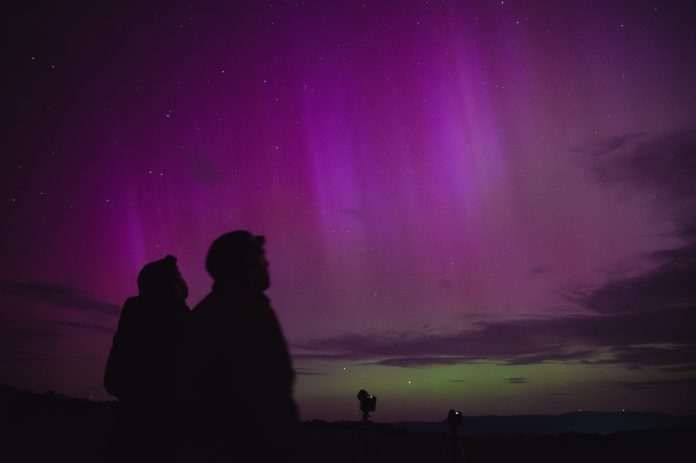Over the weekend, a powerful geomagnetic storm created spectacular displays of the northern lights, captivating skygazers in the U.S. and around the world.

People in the northern half of the U.S., and even as far south as the Florida Keys, enjoyed a rare chance to witness the aurora borealis up close. This dazzling show was triggered by a series of solar flares that unleashed the storm, producing the renowned natural light display.
On Friday, seven coronal mass ejections, propelled by the solar flares, entered Earth’s outer atmosphere, following a rare storm watch issued by NOAA—the first in 19 years. As predicted, the resulting solar storm led to reports of power grid fluctuations and disruptions in high-frequency communications and GPS systems, according to NOAA.
However, the storm also provided ideal conditions for the auroras to shine brightly across a broader swath of the U.S. than usual, thanks to the sun being at the peak of its 11-year solar cycle.

If you missed the stunning auroras, the National Oceanic and Atmospheric Administration suggests you might still catch a glimpse on Monday night as the solar storms continue.
Will the northern lights still be visible tonight?
Despite the weakening of the solar storms since Friday, NOAA forecasts they will persist at least through Monday.
The agency started monitoring the solar flares on Wednesday, originating from a massive sunspot cluster 16 times wider than Earth.
Geomagnetic storms are rated on a five-level scale. The storm that arrived on Friday was classified as a G4, one level shy of the most severe category, according to NOAA. The Severe (G4) Geomagnetic Storm Watch issued on Thursday was the first of its kind since 2005.
While the storm is expected to continue through Monday, it has been downgraded to a G3 level, NOAA’s Space Weather Prediction Center announced in a Sunday night update on social media site X.
What does that mean for skygazers? The auroras may still be visible, but the displays are unlikely to be as breathtaking as those over the weekend.



